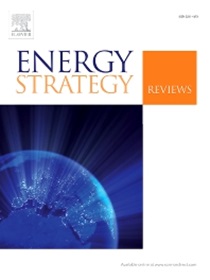Complex links between the energy trilemma dimensions in top 25 energy trilemma performers: The role of the UN plan of action for 2030
IF 7.9
2区 工程技术
Q1 ENERGY & FUELS
引用次数: 0
Abstract
Humanizing energy, i.e., engaging people and communities with the energy systems, is imperative to consider the societies’ diverse perspectives, needs, and global impacts, which is essential for a balanced growth of energy trilemma (ET). Particularly, the humanizing energy may affect the complex links, e.g., synergy and trade-off, between the ET dimensions, e.g., energy equity, energy security, and environmental sustainability, influencing the policy pathfinding for balanced growth of ET. In this respect, the United Nations plan of action for 2030 especially goal seven, i.e., affordable and clean energy, associates with this purpose. Accordingly, this study addresses the dynamic multi-dimensional assessments to indicate how such agreement affects the complex links between the ET dimensions in the top 25 ET-performing countries, which are also recognized as leaders across the energy transition index. To do this, three analytical methods, e.g., the Markov switching regimes, spillover effects, and advanced sustainability analysis, are applied. The results show that complex links between the ET dimensions are time-varying and asymmetric pre- and post-the 2030 Agenda. Specifically, the Markov regime-switching analysis reveals that a dynamic combination of synergies and trade-offs can lead to a balanced growth of ET in response to the 2030 commitments under different regimes. Then, the spillover effects exhibit that the intensity and mode of synergy/trade-off throughout the short-term fluctuations of ET networks are affected by the 2030 commitments, which require supervising risk transmission management and regulations towards a balanced growth of ET. Last, the advanced sustainability analysis discloses causality between the ET dimensions through synergy, trade-off, or D-linking by different countries in response to the 2030 commitments. Consequently, combining these three applied methods serves actionable policy implications that can be instrumental in formulating strategies of humanizing energy towards a balanced growth of ET in top energy trilemma performers and potentially other analogous settings globally. These strategies should focus on connections between the “5 Ds”, e.g., decarbonization, digitalization, decentralization, disruption, and diversification, which navigate the uncertainties and complexities energy leaders face.

求助全文
约1分钟内获得全文
求助全文
来源期刊

Energy Strategy Reviews
Energy-Energy (miscellaneous)
CiteScore
12.80
自引率
4.90%
发文量
167
审稿时长
40 weeks
期刊介绍:
Energy Strategy Reviews is a gold open access journal that provides authoritative content on strategic decision-making and vision-sharing related to society''s energy needs.
Energy Strategy Reviews publishes:
• Analyses
• Methodologies
• Case Studies
• Reviews
And by invitation:
• Report Reviews
• Viewpoints
 求助内容:
求助内容: 应助结果提醒方式:
应助结果提醒方式:


